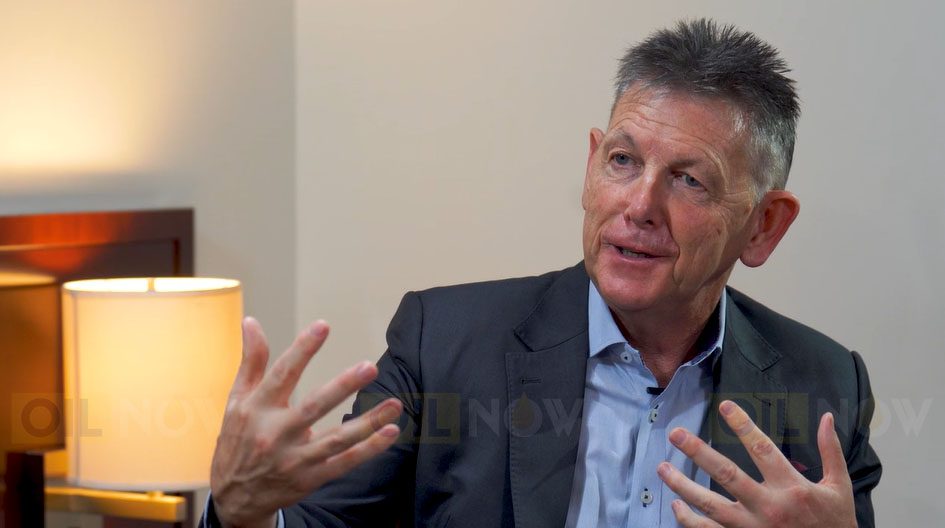Guyana’s focus is beginning to shift to its natural gas potential. While there has been talk from government that ExxonMobil may be slow to go down this development path, the Corporation’s Upstream President, Liam Mallon stated clearly that its strategy is aligned with that of the South American nation.
Mallon is the South American country for the Guyana Energy Conference and Supply Chain Expo. In an exclusive Feb. 20 interview with OilNOW’s Chris Chapwanya, Mallon reminded that gas is “a significant piece of our strategy.”
Guyana is now working to build out the framework for its gas industry and Mallon said the Gas-to-Energy (GtE) project has started the ball rolling in a big way.
“To me, that’s the start of potentially a bigger gas development plan, which the President [Dr. Irfaan Ali] alluded to, in various addresses,” he said.
But to build out a robust and lucrative sector takes time. And according to Mallon, “It’s still early days in the exploration process.”
Exxon has discovered 11 billion barrels of recoverable oil resources and a significant amount of gas; 17 trillion cubic feet to date. This is only in a fraction of the 6.6 million-acre Stabroek block.

“There is a good amount of gas and ultimately, that gas will likely be monetized. We’re excited – it will take some time to properly de-risk and appraise…exactly the amount of gas and there will obviously need to be commercial discussions associated with that but we’re very lined up with the government’s intent and very supportive of the attempt around making gas a vital component of the future,” Mallon commented.
Exxon is focused on more gas appraisal this year. It has been looking very closely at gas development options and evaluating which production facility would be best suited.
Any standalone gas development would be executed more east in the Stabroek block, near the border with Suriname, as that is where the largest quantities of proven gas are located.
The GtE project is expected to allow for a 50% reduction in electricity costs and a new era of industrialization. Guyana and the Exxon-led Stabroek block consortium are executing the project. Exxon is responsible for building a pipeline to bring gas from the Liza 1 and 2 projects to onshore facilities.
The Guyana government contracted US-based CH4/Lindsayca to construct the integrated facility at Wales on the West Bank of Demerara. It entails a 300-megawatt (MW) power plant and a natural gas liquids (NGL) facility. The government has also invited proposals from private companies for the design, finance, construction, and operation of essential gas infrastructure to support offshore developments in the South American nation.
A national gas strategy is being drafted, which will serve as a roadmap for the country’s gas development endeavors.



